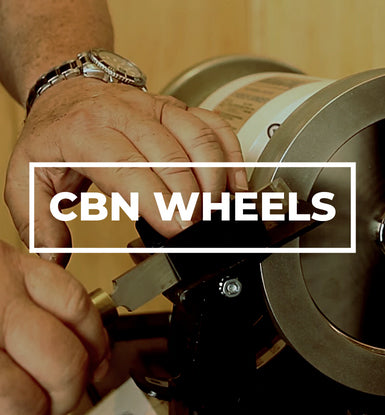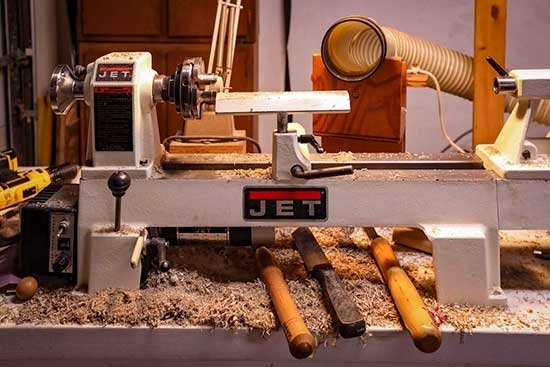Table of Contents
Woodturning equipment includes a lathe, chisels, gouges, and safety gear. These tools shape and finish wooden projects.
Woodturning is a fascinating craft that transforms raw wood into beautiful, functional objects. Essential equipment includes a lathe, which spins the wood, and various chisels and gouges for shaping. Safety gear like goggles and dust masks are crucial to protect the user.
Woodturning tools come in different sizes and shapes, each designed for specific tasks. Investing in high-quality tools ensures better results and a safer working environment. Beginners should start with a basic set and expand as skills improve. Regular maintenance of tools also ensures longevity and optimal performance. Woodturning offers endless creative possibilities for hobbyists and professionals alike.
The Heart Of Woodturning: Selecting The Right Lathe
The size of your lathe is very important. Small lathes work well for tiny projects. Big lathes are best for large workpieces. Make sure to choose the right size. This will help you make beautiful wood pieces. It also helps you work safely.
Power and speed matter a lot in woodturning. Low power works for soft woods. High power is good for hardwoods. Speed settings must match your project’s needs. High speeds are great for fine details. Low speeds help with rough shaping. Choose a lathe that offers both power and variable speed. This will make your work easy and fun.
Chisels And Gouges: Shaping With Precision
Chisels and gouges are key tools in woodturning. Each type has a special purpose. Spindle gouges shape intricate details. Bowl gouges hollow out bowls. Skew chisels create smooth finishes. Parting tools cut wood to size. Scrapers refine the surface. Choosing the right tool is crucial. Quality tools make the job easier and safer.
Sharp tools work best. Regular sharpening is essential. Use a sharpening stone or grinder. Oil stones help maintain edge. Diamond stones offer precision. Honing guides keep angles correct. Clean tools after each use. Store them in a dry place. Proper care extends tool life. Safe tools lead to better results.
Safety Gear: Protecting Yourself While Turning
Woodturning equipment demands the use of safety gear to prevent injuries. Essential items include safety glasses, face shields, and dust masks. Prioritizing protective gear ensures a safer woodworking experience.
Eyes And Ears: Essential Wear
Protect your eyes with safety goggles. Wood chips can fly everywhere. Always wear ear protection like ear muffs. Machines are very loud and can damage hearing. Keep your senses sharp and stay safe.
Breathing Easy: Masks And Dust Collectors
Wear a mask to filter dust particles. Dust collectors help keep the air clean. Breathing clean air is important for your health. Always use both to stay safe.

Credit: www.woodpeck.com
Sanding And Finishing Tools: The Final Touch
Grits help smooth wood surfaces. Start with coarse grit like 80. Move to finer grits like 150 and 220. Coarse grits remove rough spots. Fine grits give a smooth finish. Use sandpaper or sanding pads. Sanding pads are easy to use. Sanding blocks keep sandpaper flat. This helps get an even surface.
Finishes protect wood and make it shine. Use oil, wax, or varnish. Oils like linseed oil soak into wood. This makes the wood look rich. Wax gives a soft, warm glow. Varnish forms a hard, protective layer. Sealers stop moisture from damaging wood. Choose the right finish for your project. Apply thin coats for best results.
Measuring And Marking Tools: Precision From Start To Finish
Calipers help measure the diameter of wood. They are essential for accurate cuts. Dividers are used to draw perfect circles. They ensure symmetry in your work. Both tools are vital for precision. Without them, your work may lack balance.
Markers help you draw lines on the wood. These lines guide your cuts. Scribes are sharp tools used to etch lines. They ensure your cuts are precise. Both tools provide visual aids. This makes your work more accurate.
Sharpening Systems: Edge Perfection
Bench grinders are the backbone of sharpening systems. These machines spin wheels to sharpen tools. Always use a grinder with a sturdy base. This prevents any wobbling or shaking. A solid base ensures smooth operation. Make sure the wheels are balanced. An unbalanced wheel can cause problems. Wear safety goggles to protect your eyes.
Jigs and guides help maintain consistent angles. This is crucial for precise sharpening. Attach the jig to the tool. Then, adjust the guide to the desired angle. This setup makes sharpening easy. Consistent angles mean better performance. Tools stay sharp longer. These aids are essential for beginners and experts alike.
Lathe Accessories: Expanding Your Capabilities
Faceplates and chucks hold your wood securely. They attach to the lathe’s spindle. Faceplates are flat and have holes for screws. Chucks have jaws that grip the wood. Strong grip is essential for safety. Different chucks fit different projects. Some chucks can hold small pieces. Others can hold large logs. Choose the right one for your project. Both tools help keep your work steady.
Tailstock live centers offer support and stability. They fit into the lathe’s tailstock. Live centers have a rotating tip. This helps the wood turn smoothly. Less friction means a cleaner cut. They are useful for long or thin pieces. Use them to prevent wobbling. Stability is key for precise work. Live centers come in different sizes. Pick one that suits your needs.

Credit: woodturnerswonders.com
Creating Your Workspace: Setting Up For Success
Good lighting is key for any woodturning workspace. Natural light is best, but LED lights work well too. Arrange your tools within easy reach to save time. Clear pathways help you move safely and quickly. Keep your lathe in a central spot. This way, you can turn easily and see your work clearly.
Proper storage keeps your tools in good condition. Use pegboards for hanging tools. This keeps them visible and accessible. Drawers and shelves help in storing smaller items. Label your storage areas to find tools quickly. Magnetic strips can hold metal tools securely. A tool chest on wheels adds mobility to your setup.

Credit: turnawoodbowl.com
Frequently Asked Questions
What Equipment Do You Need For Wood Turning?
For wood turning, you’ll need a lathe, chisels, gouges, a sharpening system, and safety gear like goggles and gloves.
What Is The Best Wood Turning Lathe For A Beginner?
The Jet JWL-1221VS is ideal for beginners. It’s user-friendly, durable, and offers variable speed control. Perfect for learning.
What Wood Turning Tools Should A Beginner Use?
Beginners should use a spindle roughing gouge, bowl gouge, parting tool, skew chisel, and scraper. These tools cover basic needs.
What Is The Best Wood For Woodturning?
The best wood for woodturning includes maple, cherry, walnut, and ash. These woods are easy to work with and produce excellent results. For beginners, softwoods like pine can be more forgiving. Each wood type offers unique grain patterns and finishes, enhancing your projects’ beauty.
Conclusion
Mastering woodturning starts with the right equipment. Invest in quality tools for better results. Remember, safety gear is crucial. Choose wisely and enjoy your woodworking journey. Happy turning!
